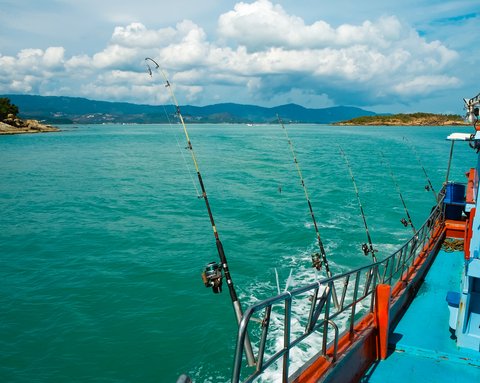Saltwater fishing usually entails drifting for gamefish, unless anchored on a wreck or trolling lures, but current and wind can wreak havoc for most anglers. There are some different drifting techniques which can improve your catch rate.
Most saltwater gamefish will orient themselves with some type of underwater structure such as a wreck, depth changes, reefs, mussel beds, etc. These areas provide the presence of baitfish, ambush opportunities and safety from larger predators.
RELATED: How to Know the Difference Between Tide and Current
Successful drifting puts the lure closer to these pieces and in the neighborhood of the targeted gamefish. Drift speed and drift direction are the two main factors that influence the lure’s presentation whereby “naturally looking” baits increase the likelihood of hooking up.
Factors Affecting Drift
Wind, tidal current, and the vessel’s characteristics play a crucial role in affecting the direction and speed of the drift. The style of the vessel will impact how wind and current affect the vessel drift speed as lower profiled boats are less affected by the wind. Smaller boats, skiffs, and center consoles are generally less affected compared to higher profiled cuddy cabs and sportfisherman, where there is more surface area available to the wind. In addition, keeled vessels will generally perform better where tidal surface currents play a role as they will generally have slower drifts than their non-keeled counterparts.
Knowing Your Plot
On most vessels GPS chartplotters have become vital tools for navigation and fishing which show the actual position of the vessel overlaid on the marine chart of the area. Once a piece of structure is located, use the GPS chartplotter to take a prospective drift which determines the drift plot on the machine. By looking at the drift plot, you can plan on your best drift strategy to target the underwater structure. Now, subsequent drifts can be performed over the piece allowing you to successfully target the entire area by drifting in a grid-like fashion. The GPS chartplotter will also give the instantaneous speed of the vessel during the drift. There are a few techniques to employ if the drift speed is not where you want it for a specific species.
Controlling Your Drift
Drift socks and power drifting are two means to achieve the “ideal” drift. For instance, if the drift is too fast, employ a “drift sock” which basically acts as an underwater parachute to slow down the speed of the vessel. When the vessel’s engines are used to change the drift direction or speed, this is called power drifting. Power drifting requires more work as you have to constantly be on the throttles and be aware of the locations of the lines and the propeller. Fishing line and a spinning propeller do not go good together, especially braided line, so you need to stay cognizant.
Sometimes the wind and tide are competing with each other and the vessel either drifts too slowly, too fast, or not at all. If these conditions occur, the vessel’s engine can be used to augment the drift by bumping the engine in and out of gear. Power drifting can also be used to change drift speed or drift direction. This technique can save the day when conditions are poor, so keep it in your bag of tricks.
With all of the variables at hand (wind, tidal currents, vessel characteristics, other boats, etc) anglers rarely get the “perfect” drifting conditions, but by using these techniques it will ultimately help put more fish on the end of the line.
© Evgeny75 | Dreamstime.com – Sea fishing from the boat,








